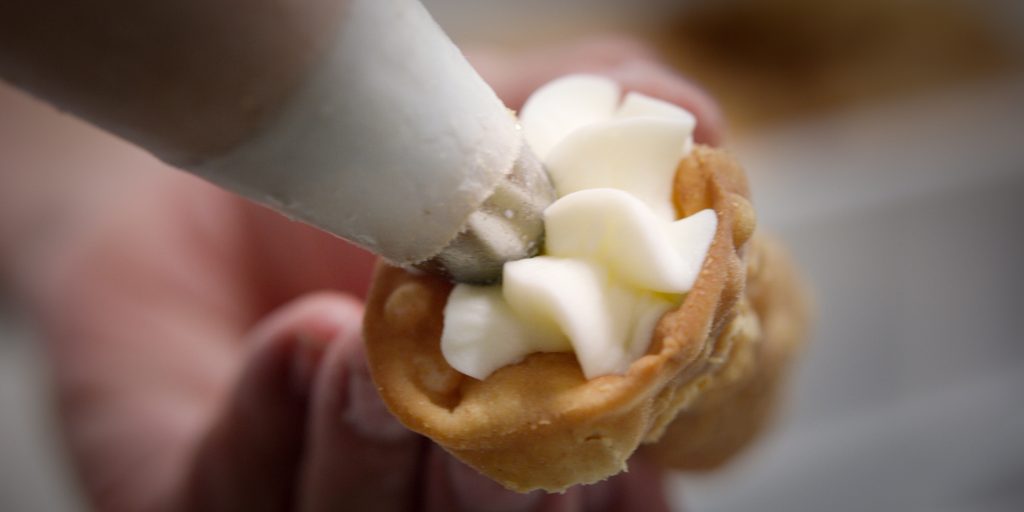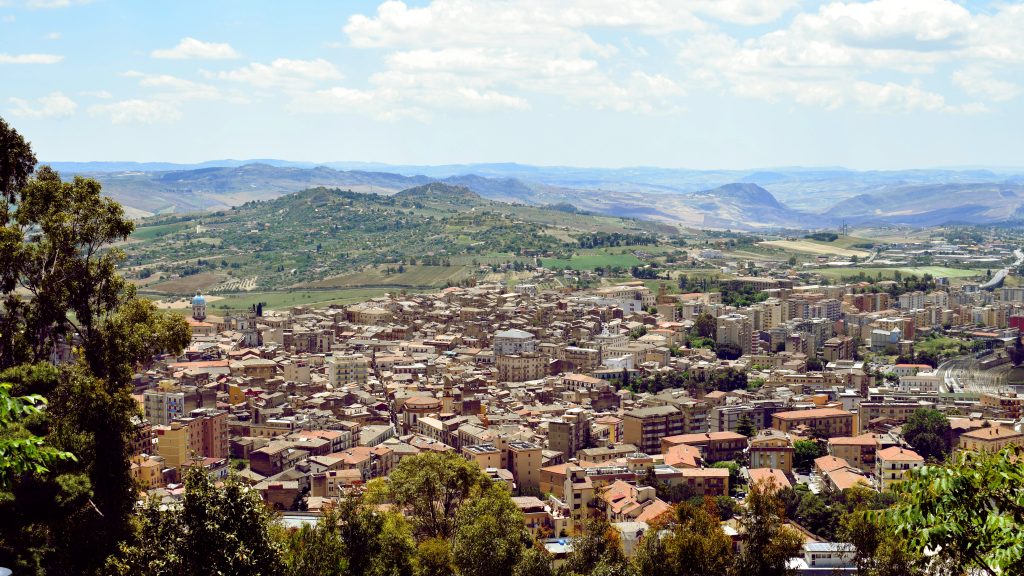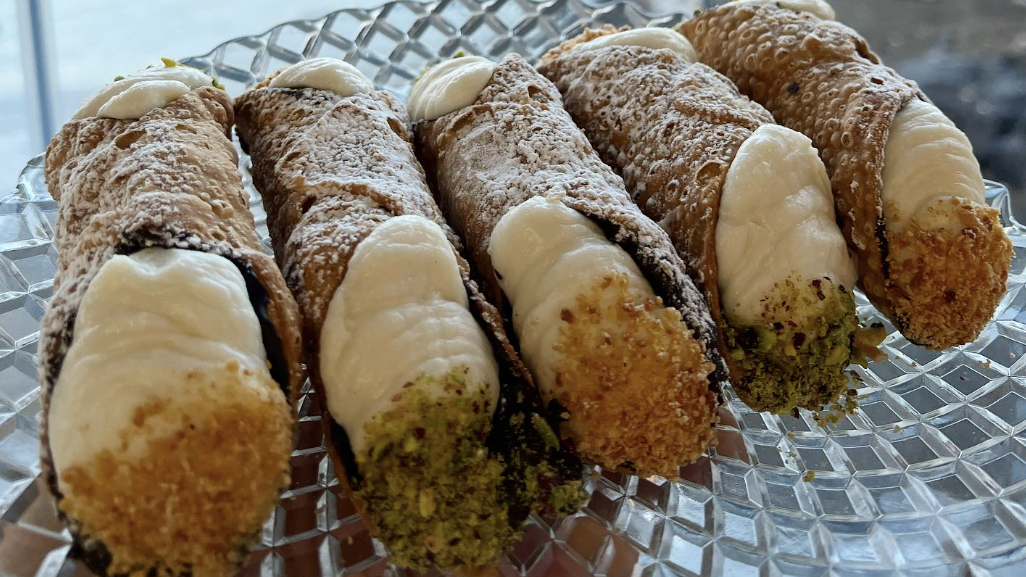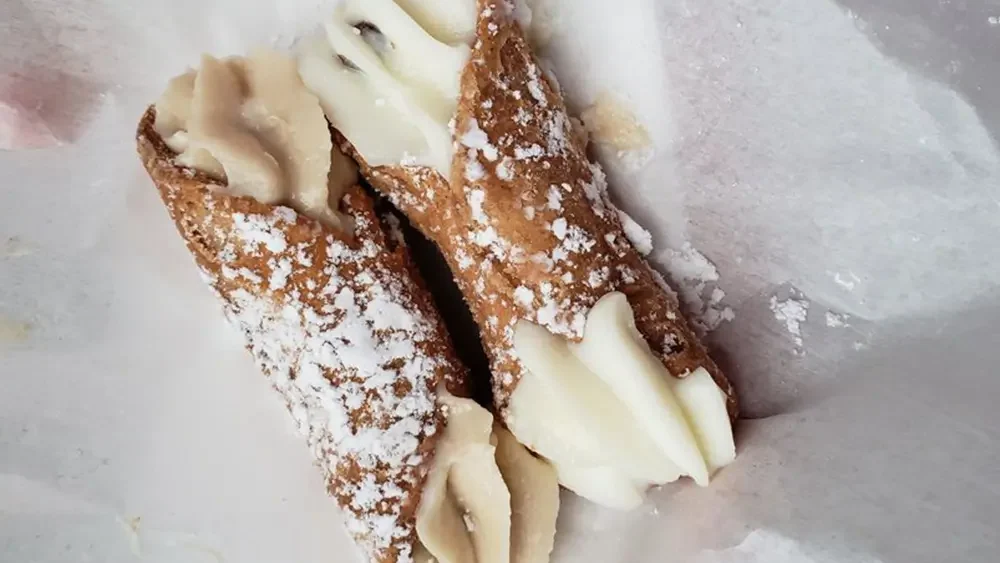A Deep Dive into Sicily’s Sweetest Gift

The Birth of a Sicilian Legacy
The origins of cannoli trace back over a thousand years to the Arab rule of Sicily (9th-11th century). The Arabs introduced sugarcane, almonds, and citrus to the region, laying the foundation for many of Sicily’s famed pastries.
Legend has it that they were first crafted in the harems of Caltanissetta, where women prepared the sweet as a tribute to their lovers. Another theory ties cannoli to Sicilian monasteries, where nuns perfected the art of pastry-making. Regardless of its true beginnings, by the time Sicily fell under Norman rule, cannoli had become a staple of Sicilian celebrations, particularly during Carnevale—a festival of indulgence before Lent.
Variations Across Italy
While traditional Sicilian cannoli feature a crisp, deep-fried shell filled with sweet ricotta (often with candied fruit or chocolate), different regions and towns have developed their own twists:
Palermo-Style – A lighter ricotta filling, often mixed with pistachios or Marsala wine.
Catanese – Slightly larger, with a richer, denser ricotta blend.
Piana degli Albanesi – Made with sheep’s milk ricotta, considered by purists to be the most authentic.
Naples-Influenced – Sometimes featuring mascarpone or a hybrid of ricotta and custard.
Rome’s Cannolo Romano – Thinner shells, more delicate, and often found in boutique pasticcerie.

A Bit of Back Story…
Arab Origins
The story of cannoli begins over a thousand years ago, during Sicily’s period of Arab rule (9th-11th centuries). The Arabs introduced many of the island’s most defining ingredients, including sugarcane, almonds, citrus fruits, and ricotta-making techniques.
Some historians believe that they were originally inspired by an Arabic pastry filled with almond paste and honey, similar to modern Middle Eastern desserts like qatayef or kunafa. The idea of a crispy shell with a creamy, sweet filling aligns with the flavors and textures commonly found in Arab cuisine.
One version of the story says that Arab rulers in Sicily’s palaces enjoyed an early form of cannoli, made by palace chefs as an indulgence for the emir’s court. These early pastries were thought to symbolize fertility and abundance—a theme that would follow cannoli throughout history.

The Nun Connection
Another widely accepted theory places the creation of modern cannoli in Sicilian convents during the Middle Ages. After the Normans conquered Sicily and ended Arab rule, many of the Arab culinary traditions were preserved by cloistered nuns, who refined and adapted recipes over time.
Legend has it that nuns from a convent near Caltanissetta, a town in central Sicily, perfected the modern cannolo recipe. They made them as a treat for Carnevale, the pre-Lenten festival when rich, indulgent foods were eaten before the fasting season. Cannoli’s shape, some say, was inspired by medieval symbols of fertility, a nod to ancient Roman and Arab traditions.
The name cannolo itself means “little tube” in Italian, referring to the shell’s hollow, cylindrical shape. This could also relate to water reeds or river canes, which were once used as molds to fry the dough into its signature form.

A Symbol of Sicilian Identity
Over the centuries, cannoli became more than just a dessert—they became a marker of Sicilian identity. While they were originally a Carnevale specialty, Sicilians began eating them year-round, often at weddings, feasts, and important celebrations.
By the 19th century, cannoli had spread throughout Italy and beyond, carried by Sicilian immigrants to the United States, Argentina, and Australia. In New York and Boston’s Little Italy neighborhoods, Sicilian bakeries turned cannoli into a staple of Italian-American culture.
Today, the phrase “Fare la figura del cannolo” (to look like a cannolo) exists in Sicilian dialect—it means to present oneself well, just like a perfectly made cannolo.
Cultural Significance: A Symbol of Celebration
Cannoli are deeply woven into Sicilian culture and identity. No wedding, Christmas, or Easter feast in Sicily is complete without a tray of freshly made cannoli. They symbolize indulgence, prosperity, and Sicilian craftsmanship. Even in Sicilian-American communities, especially in New York and New Orleans, cannoli serve as a nostalgic link to ancestral roots.
The phrase “take the cannoli”—immortalized in The Godfather—underscores just how integral this dessert is to Sicilian and Italian-American heritage.

The Journey of Ingredients: A Global Mix
Though cannoli are quintessentially Sicilian, their ingredients have diverse origins:
Ricotta Cheese – Likely introduced by the Arabs, made from sheep’s milk in traditional Sicilian versions.
Sugar – Brought to Sicily by the Arabs, transforming the island’s culinary landscape.
Cinnamon & Chocolate – Ingredients that arrived via trade routes from the Middle East and the Americas.
Pistachios – Native to Persia but cultivated in Sicily for centuries.
Candied Fruit (Citrus, Cherries, Pumpkin) – A distinctly Sicilian touch, made possible by the island’s fertile volcanic soil.

Evolution of Cannoli: From Sicily to the World
With the wave of Italian emigration in the late 19th and early 20th centuries, cannoli traveled far beyond Sicily. Today, you can find variations across the globe:
New York – Often larger, with thicker shells and a sweeter ricotta blend.
Argentinian – Sometimes featuring dulce de leche instead of ricotta.
French – Incorporating a puff pastry shell rather than a fried one.
Japanese – Mini versions with matcha-infused ricotta.
Vegan & Gluten-Free – A modern adaptation for contemporary diets.

Where to Find the Best Around the World
Whether you’re in a major metropolis or an off-the-beaten-path town, these are the top spots to experience authentic and creative cannoli:
Pasticceria Cappello (Palermo, Italy) – A legendary Sicilian bakery known for its classic sheep’s milk ricotta cannoli.
Caffe Sicilia (Noto, Italy) – Historic pastry shop famed for its artisanal cannoli.
Ferrara Bakery (New York) – A staple in Little Italy since 1892, it’s bright lights and show-stopping facade will draw you in. Now in New York there is a long standing war over the best cannoli. So when you go, skip down Mulberry St a few blocks to Ferrara’s rival bakery: La Bella Ferrara. Get a cannoli from each and decide for yourself. (By the way, the oldest bakery in New York is also in this neighborhood – across the way on Broome street is Caffe Roma (1891), and yes, they also serve cannoli!)
Mike’s Pastry (Boston) – Home of the famous oversized cannoli in the North End.
I Dolci di Nonna Vincenza (Catania) – A family-run institution serving some of the best cannoli in Sicily.
Cannoli & Co (Melbourne) – A modern take on Sicilian sweets. 132 Burke Rd, Malvern East VIC 3145, Australia
Pasticceria Etna (Taormina) – Off the beaten track but worth the detour for authentic cannoli with a view.
Panadería Italiana La Pompeya (Buenos Aries) – Traditional Italian bakery with big puffy cannoli shells.
Pasticceria Simona (Paris) – French staples plus traditional pistachio studded cannoli.
The Future of Cannoli?
Cannoli continue to evolve, from gourmet deconstructions in Michelin-starred restaurants to street food adaptations. While purists insist on the traditional ricotta-filled shell, younger chefs are experimenting with flavors like matcha, salted caramel, and even savory versions.
However, one thing remains constant—cannoli, whether eaten in a tiny Sicilian pasticceria or a trendy Brooklyn bakery, will always represent a taste of history, culture, and indulgence.
For more from Sicily, check out the Cerca Travel article on 7 must-have traditional foods while in Sicily.